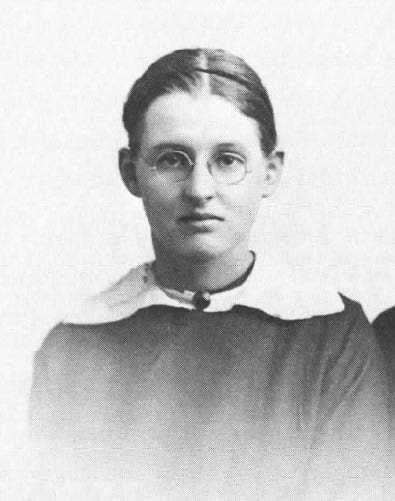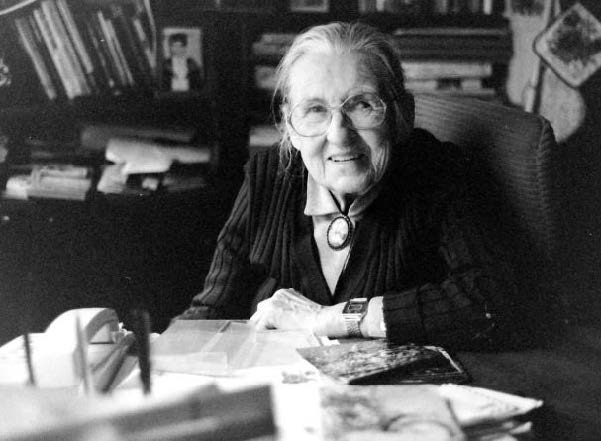The Wildflower Shows

Wildflower Shows were held annually by the Field Naturalists’ Club of Victoria (‘FNCV’) from 1885 to 1930 at various locations including the town halls of Melbourne and St Kilda. The Wildflower Shows were extremely popular and were always very well attended. Over the years, Williamson participated in the event before finally becoming its chief organiser. His domain was the Plant Classification table, which involved writing up hundreds of labels for specimens including plants rarely seen outside their native habitats.
Melbournians attending the show learnt about Australian natives from Victoria and interstate, which ironically, were at the time considered ‘wild’ or ‘exotic’, as most gardens of the day were filled with formal beds of roses, chrysanthemums, and dahlias1.
The FNCV felt that those in the horticultural industry had neglected Australian flora and saw this event as an opportunity to invite those in the field to promote native plants. Patrons were invited to use microscopes to view flower sections and to take note of scientific names that accompanied specimen jars packed with vibrant blooms2.

Mentoring Jean
The wildflower shows were an opportunity for like-minded individuals to come together and share ideas. It was at an exhibition at the Melbourne Town Hall in 1922 that Williamson first met sixteen-year-old aspiring botanist, Jean Galbraith (1906-1999)1.
After their meeting the two began to correspond weekly, with Williamson offering to identify specimens mailed to him by Jean. After 16 months Jean had collected and sent, and Williamson had received and identified, 234 different plant species. By late 1924 that number had increased to 426 and by 1928, 608 species had been identified3.
...You must not speak of the time I spend reading your letters as a waste. No observation notes straight from the field can fail to interest me and seldom do I read any but I gain something from them.4
- Letter from Williamson to Galbraith providing reassurance of his interest in her 'lengthy letters'. Dated March 1924. State Library of Victoria.

Galbraith joined the FNCV on Williamson’s recommendation and assisted him at his plant classification table at the wildflower show every year until his passing1. After Williamson’s sudden death in 1931, Galbraith continued his botanical work by maintaining the relationship with Kew Herbarium in London — sending his precious specimens on his behalf.
She noted that she felt compelled to honour his legacy by doing this, along with organising his personal herbarium, including both his botanical writings and specimens.
I could do only a small part of what Mr Williamson did every month — and that little I counted a privilege.
- Letter written by Jean Galbraith, 19 February 19314 after the death of her mentor.
Jean Galbraith went on to leave a significant botanical legacy in her own right. For over 50 years she contributed to the FNCV, including writing articles for The Victorian Naturalist. In 1950, Galbraith published ‘Wildflowers of Victoria’6, an accessible field guide, which was the first of its kind for the state3.
Galbraith inspired many Australians from the 1920s to the 1970s to grow natives - passionately advocating for them in her articles and books. In 1970 she was a recipient of the Australian Natural History Medallion.

Changing Times
Wildflower Shows were considered the FNCV’s most valuable public event. However, they were discontinued after the Club’s years of tireless conservation advocacy paid off through the passing of the Wild Flowers and Native Plants Protection Act 1930 (Vic)1.
Williamson was one of four members from the FNCV appointed to a subcommittee to assist the Forests Commission in administering the legislation. Although it was the end for the Wildflower Shows, the FNCV succeeded in accomplishing something that they had campaigned for over many years, the protection of native flora1.
All Club shows, in future, take the form of Nature Exhibitions, in which all branches of natural history, including wildflowers, shall be represented; and that wildflower shows, as such, shall not be held.
- H.B. Williamson, The Victorian Naturalist, December 1930
References
1. Presland G. Understanding our natural world: Field Naturalists’ Club of Victoria 1880–2015. Blackburn, Victoria: Field Naturalists' Club of Victoria Inc.; 2016.
2. Fletcher M. ‘Exotic’ natives: The Field Naturalists’ Club of Victoria’s wildflower shows. Victorian Historical Journal. 2008;79(1):93–106.
3. Latreille A. Kindred spirits: a botanical correspondence, letters by Jean Galbraith, drawings by Joan Law-Smith. South Yarra, Victoria: Australian Garden History Society; 1999.
4. Williamson HB. Letter to Jean Galbraith. MS12637, Papers of Jean Galbraith, 1900-1990 State Library Victoria, Melbourne, Victoria; 1924.
5. Galbraith J. Wildflowers of Victoria. 2nd ed. Melbourne, Victoria: Colorgravure Publications; 1950.
6. McKenzie B. A Day with Jean Galbraith [radio broadcast]. Hindsight. Australia: Australian Broadcasting Corporation Radio National; 2013 Oct 20. Photo, “Jean Galbraith in her home 'Dunedin' in the Latrobe Valley of Victoria in 1990”, (B. McKenzie). Available from: https://www.abc.net.au/listen/programs/hindsight/a-day-with-jean-galbraith/4970890
7. Dickins HP. One hundred Australian wildflowers with botanical and vernacular names. Melbourne, Victoria: Renwick Pride - Photogravure; 1956. Colour plate, “Some Victorian Wild-flowers”, p. 6. [accessed 2021 Mar 18]. Available at: https://viewer.slv.vic.gov.au/?entity=IE2221266&mode=browse